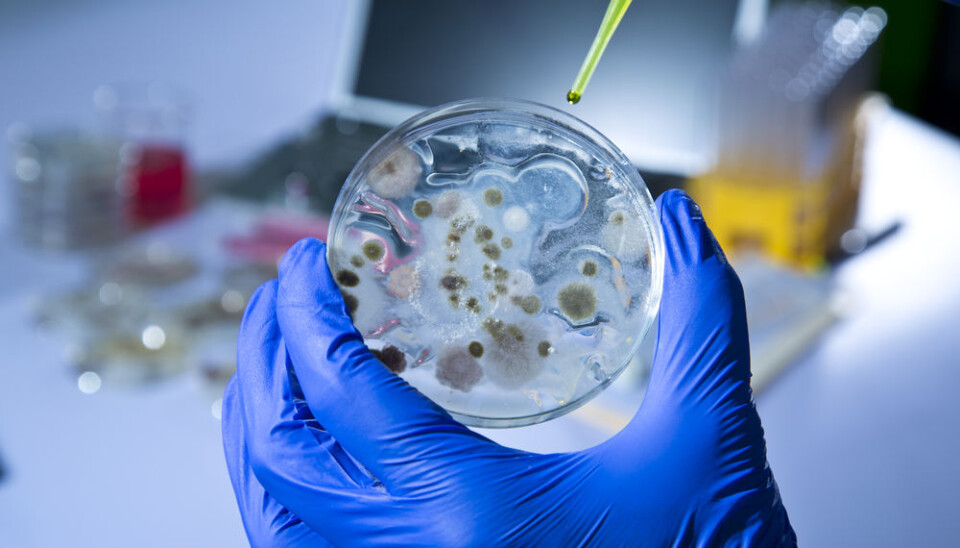
New study offers hope for patients with chronic infections
Scientists learn more about the showdown between bacteria and the immune system.
When chronic infections take root the body's immune system often fights a losing battle.
The immune system's white blood cells are simply not able to cope with the chronically infectious bacteria — and antibiotics often have no effect.
But new Danish research could change that:
"For the first time, we have a method to measure precisely how bacteria grow in the infected tissue itself," says Professor Thomas Bjarnsholt from the Department International Health, Immunology and Microbiology of the University of Copenhagen.
Previously, it was only possible to observe bacteria growth in laboratory dishes outside the living tissue (in vitro). Now things can be done differently, and inside living bacteria (in vivo).
Could help fight resistant bacteria
The researchers' main finds can be summarised as following:
- Chronically infected bacteria grow at different rates (heterogeneously) in the lungs of cystic fibrosis patients.
- The difference in the rate of growth of the bacteria is due to the number of white blood cells having a constraining effect.
This new knowledge can likely be used in the treatment of patients with chronic infections.
"We hope that in future, thanks to this knowledge about the heterogeneous growth of bacteria, we’ll be able to differentiate treatment methods and do a better job combatting bacteria,” says Bjarnsholt.
Cystic fibrosis lungs a mucilaginous bacterial bomb
One of the greatest and most serious forms of chronic infection is the lung infection in patients suffering from cystic fibrosis.
Lung tissue from cystic fibrosis patients is also the what Bjarnsholt and his collegaues have studied closely.
Chronic infection occurs when bacteria band together in colonies (so-called biofilm), forming a shield against the body's own immune system and antibiotics.
It is, among others, the bacteria Pseudomonas aeruginosa in the lungs of cystic fibrosis patients that results in a chronic state of infection.
Characteristic of cystic fibrosis is the production of a thick sticky mass of mucus. Under normal conditions, mucus is formed to help expel impurities and bacteria from the air passages but in cystic fibrosis patients, the mucus is so thick and difficult to cough up that it gets stuck, producing an excellent breeding ground for bacteria and a chronic state of infection.
Light microscopy solves lung function riddle
According to Bjarnsholt, what actually goes on in the lungs has been something of a mystery for a long time.
Thatàs why they decided to acquire better insight into the basic processes in lungs affected by a chronic infection.
The first task was to find out how bacteria grow in the lungs of cystic fibrosis patients.
"We found no correlation between bacteria concentrations and the rate of growth of bacteria,” says Bjarnsholt. “However, on the other hand we discovered to our great surprise that the bacteria have many different growth rates.”
The scientists used an innovative version of the so-called FISH method, followed by light microscopy to demonstrate the growth of the bacteria. The method has previously been used to identify dead bacteria, but the Danish team have now made it possible to examine living bacteria in the infected tissue itself.
The principle of the FISH method is that the amount of ribosomes in the cell of the bacteria is proportional to the bacteria's growth rate. By labelling every ribosome with a light-emitting substance it is possible to visualise individual bacteria.
In other words: the faster a bacteria grows, the more ribosomes there will be and the more light will be emitted.
Revelation came to researchers during coffee break
The discovery of bacteria's heterogeneous growth rate was a huge step forward for Bjarnsholt and his team. A step forward which soon led them to wonder what the cause of the difference could be.
One of Bjarnsholt’s PhD students, Kasper Nørskov Kragh, spent hours measuring all sorts of possible correlations in an attempt to find a possible cause.
It turned out to be a coffee break that would make all the difference. Bjarnsholt and Nørskov happened to discuss how the difference in growth rate might be due to the presence of an oxygen-reducing factor.
The solution was right there in the microscope: the white blood cells.
"Kasper discovered a reverse correlation between the growth rate of the bacteria and the number of white blood cells in the bacteria's surrounding tissue. The greater the number of blood cells surrounding each colony of bacteria, the slower they were growing," says Bjarnsholt.
The explanation is that the white blood cells are able to consume oxygen but suffocates the bacteria, which is the reason for their reduced growth rate.
The study has been published in the journal of the American Society for Microbiology.
———————
Read the original story in Danish on Videnskab.dk
Translated by: Hugh Matthews





